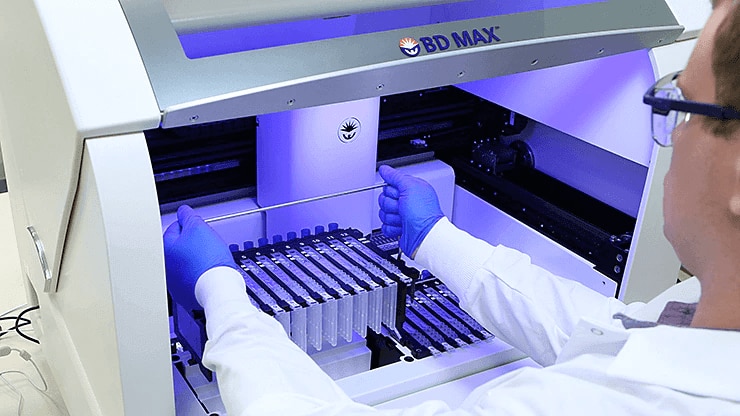HAIs are estimated to cost €7billion in Europe each year3
Healthcare-associated infections
In an ideal world, your institution would have zero heathcare-associated infection and zero outbreak.

But in the current state over 1 in 20 patients entering the hospital in Europe acquire a healthcare-associated infection (HAI)1.
as a direct consequence of HAIs in the European Union each year2
Surgical site infections, Catheter-associated urinary tract infections and catheter-related bloodstream infections represent 50% of all HAIs2

Beyond high medical burden and cost, HAIs impact the hospital's image and reputation and lead to increased litigation costs.
The challenges to preventing and managing HAIs lie in the implementation of clinical practice–based measures (evidence-based practice interventions) and the use of technologic approaches (evidence-based technologic innovation interventions (devices and technology)4.
Increased compliance to guidelines and standardized practices help decrease HAIs5.
Rapid and accurate diagnostics of HAI enable effective clinical decision-making6.
HOW BD SUPPORTS YOU
BD supports you in HAI prevention and treatment management overview.
BD supports you in enhancing compliance to guidelines and offers you safe alternatives to help reduce SSIs, CAUTIs and CRBSIs with a portfolio of solutions which include innovative technologies and services.
BD supports you in improving sample quality by optimising processes and standardising practices with a portfolio of solutions which include innovative technologies and services.
BD supports more rapid, accurate and appropriate diagnostic identification enabling effective clinical decision-making with a portfolio of solutions which include innovative technologies and services.
BD supports you in enabling remote multi-site diagnostic result availability with digital infrastructure for faster decision-making with a porfolio of solutions which include innovative technologies and services.

Diagnostics Systems
Diagnostic Systems is a global leader of products and instruments used for diagnosing infectious diseases. Our products are used in the clinical market to screen for microbial presence, grow and identify organisms, and test for antibiotic susceptibility.

Blood Collection
Improving sample quality by standardising processes and practices resulting in reduced sample collection errors, reduced retesting, greater diagnostic accuracy and faster and more consistent results.
- European Centre for Disease Prevention and Control. Point Prevalence Survey of Healthcare-Associated Infections and Antimicrobial Use in European Acute Care Hospitals 2011-2012; 2013. https://www.ecdc.europa.eu/sites/default/files/media/en/publications/Publications/healthcare-associated-infections-antimicrobial-use-PPS.pdf. Accessed March 12, 2020.
- European Centre for Disease Prevention and Control. Annual Epidemiological Report on Communicable Diseases in Europe 2008: Report on the State of Communicable Diseases in the EU and EEA/EFTA Countries; 2008
- ECDC 2008
- Rupp M.E. et al. Infect Dis Clin N Am - (2018); https://www.nice.org.uk/guidance/cg139/chapter/1-Guidance
- loveday, epic2 guidelines, 2014
- Committee on Diagnostic Error in Health Care, Balogh, Improving Diagnosis in healthcare, 2015, book, page 69